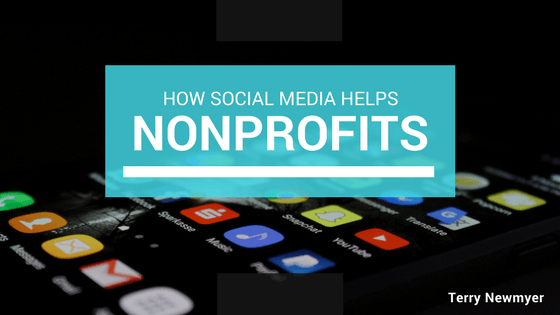
Impact Investing: For Your Good and the Greater Good
Impact investing may sound like a novel fad these days, but the idea of contributing to social and environmental causes has existed almost as long as the issues themselves. However, impact investing takes philanthropy to a new level by harnessing the power of compound interest to yield greater good across the globe. This burgeoning niche market has grown beyond the confines of the wealthy, opening the way for everyday investors to enhance their world along with their portfolios.
Impact investing makes it easier and profitable for institutional or individual investors to place their money where their hearts are – into the causes that support the values and ideals they hold. The impact investment market channels capital toward organizations that are tackling global challenges such as conservation, poverty, food security, sustainable agriculture, healthcare, housing, and education. Impact investing pays in so many ways. Here are a few:
Becoming Part of the Solution
Global dilemmas such as abject poverty, climate change, and education access cannot be fully addressed by governments. Private capital is critically needed to solve these problems. Through impact investing, the average person does not have to shake his head in despair; he can actively participate in taking down these challenges.
Reaping Returns on Doing Good
Global issues are potential gold mines. Those who successfully handle today’s problems will reap abundantly in the future. The Global Impact Investing Network indicates that most of the $15 billion impact investment market yields returns on par with the market. A recent Morgan Stanley study found that social impact funds were less volatile than similar non-impact funds over the last seven years.
Bringing Funds and Ideas Together
Impact investing marries values with wealth and provides a way to increase the reach of both. One can make a consistent commitment to favorite causes without sacrificing returns. Impact investing is an effective means to be socially responsible and achieve a market-level ROI instead of donating with no opportunity for returns.
Becoming the Change
Investment strategies are often focused on obtaining the highest possible returns on portfolios and securing one’s own financial security and freedom. Impact investing shifts the focus toward opportunities to promote effective changes in issues that affect the world. We all have the ability, resources, and responsibility to make a positive difference for our global neighbors and the generations to come.

Why Businesses Need an Outreach Component
Whether you’re a small business owner or the CEO of a Fortune 500 company, it’s crucial that you constantly be thinking of creative ways to grow your business within the market. The economy and public opinion change on a dime, and you have to prepare your business to move with those changes instead of against the current.
While business strategy and diversification of your products and services will allow your company to be more dynamic within the market, one component that rarely gets enough attention is whether or not your business has a vibrant outreach program.
Try to align causes with your brand
Outreach programs can vary from company to company, but they should not only be implemented but discussed often with employees and encouraged among staff members. In the case of Patagonia, they allow their employees the opportunity to volunteer abroad to help with environmental conservation programs while still earning their salary. Patagonia is an outdoor clothing company, but a part of their mission is to improve the environment and are dedicated to this cause. If there is a cause that is in line with your business’ brand, align yourself with them and pledge to help.
Community outreach portrays your company as a responsible force within the community and adds significant value to your brand. On a whole, your brand’s reputation will either be established or improved because of this outreach.
Community work gets employees engaged
It should come as no surprise that when your employees feel like they are making a difference in their community through their work, they are more likely to feel content within their role. Allowing employees the ability to help their community one day out of the month, during a work day, will show that you, as a business owner, care about their fulfillment, and also about the community as a whole. There are so many opportunities and options for volunteer work, and nonprofits in your area will definitely benefit from any time your employees are willing to give. Check out local charities and shelters to see if their facilities need a good cleaning or need to be staffed one day each month. Another great idea is to take suggestions from your employees, which can only get them more excited about this outreach program.
Customers will respond well
Not only will an outreach component get the employees engaged, it’s likely to pique the interest of your current and prospective clients. With the case of Patagonia, most of their customer base is probably concerned about the environment as many of them hike and are in nature. When they hear Patagonia and their team are dedicated to environmental conservation, they’ll be even more dedicated to the brand. Even if your program is not as extensive as Patagonia’s, having any kind of outreach program built into your business plan will boost customer retention.
Improves overall local community image
Regardless of whether or not your business is able to afford to send people across the world for huge outreach programs, or your employees are helping here and there at a local nonprofit, the local community will respond with positivity. Nonprofits in the area will respect your dedication to the community, even if you’re not directly helping that specific organization. Residents within the area will also recognize your involvement in making the community a better place.
Protects you from potential social media backlash
Social media has given us the ability to share information instantaneously with our friends and family members. When something significant happens, it’s likely going to go viral on Twitter and gain a lot of attention around the world. For your business, that kind of free marketing is a dream come true, unless it’s bad press. If your company is relatively unknown and something negative is said about your company online, even if it doesn’t go viral, those who are just being introduced to your business will associate you with that negative image or comment. Employing a community outreach program can help establish your company as being a responsible business that cares about the community.
An outreach component to your business is never a waste of time or resources because the community will always benefit, your employees will find enjoyment and fulfillment, and customers and future customers will more easily align with you and your mission.

How Social Media Helps Nonprofits
It seems like everyone is on Facebook nowadays. Every day, people sign into their social media accounts to learn about the news for the day, what their relatives and friends are up to, and what is trending online. Philanthropic organizations have the ability to reach people through social media platforms that they would never have had the ability to without this technology.
Sharing Content
Every active philanthropic organization has updates and content that people who believe in the cause will want to see. Connecting people who are already associated with the organization is just one piece of the puzzle. Social media facilitates conversation about the organization and allows content to be shared to people who had never heard of the nonprofit.
Fundraising
Most nonprofits need to rely on the donations of people believing in their cause to continue functioning and acquiring donations through fundraising allows them to stay open. Before social media, fundraising might have meant putting together an event and relying on people to attend to raise money. While this is still a means to fundraise, nonprofits also have the ability to create accounts on crowdfunding sites and share them with their followers on social media to get the word out.
Engaging with the community
Beyond just engaging with those who already support you, nonprofits on social media are able to interact with other like-minded organizations around the country or even around the world. These associations can open the doors to new benefactors who may want to align themselves with your mission.
Cheap or free advertising
Before the days of social media, nonprofits would have to dip into their funds in order to get exposure to news outlets and potential donors. Advertising, while costly, was necessary for any nonprofit organization to grow in the local community, let alone on a national stage. Most social media accounts are free to sign up and require time crafting posts and creating content, not money on advertising to grow their audience.
Allows you to clarify your mission
Social media posts are easy to put together and allows the organization to hone in on exactly what they want to say about their mission and goals. Prior to social media, brochures were primarily how organizations would get their information out there, but updating brochures and reprinting them are expensive. Signing on to your social media account and updating the profile and posting content in line with the mission is much easier and much more effective.
About Terry Newmyer
In 2013, Terry Newmyer came to Florida and opened the Strategies Now office, where he delivers marketing strategies to clients and works across multiple industries to support growth and development to achieve the projected results of their vision.
Early Career and Healthcare
Soon after receiving his Master’s degree at Andrews University, Terry became the Senior Vice President of the Lakeland Regional Health System in St. Joseph, Michigan, where he was responsible for marketing, planning, communications, managed care, education, physician services, and foundation management. Between 1988 and 1994, Terry helped increase the system-wide revenue from $65 million annually to $250 million. Terry later moved to Dallas and worked as a consultant for KPMG LLP, National Strategy Practice, where he started as a Manager and became a partner. There, Terry was responsible for launching a new consulting office that within two years of opening included twenty consultants and was achieving $10 million of annual revenue.
Terry Newmyer went on to found Strategies Now Inc., where he now serves as Managing Director. Terry then moved to Florida, where he resides today, to continue his work at Florida Hospital as the Senior Vice President of Business Development and Chief Development Officer. One achievement at Florida Hospital included securing sixteen new alliance contracts worth over $90 million of net value to the Hospital with various Fortune 500 companies such as GE, Walt Disney World, Olympus, and Nike. In 2007, the company completed a $100 million fundraising campaign over a year ahead of schedule and the following year exceeded the goal by $30 million.
Terry Newmyer was eventually offered a position as the President and CEO of Northern California Network Adventist Health in California and was responsible for the management of five different hospitals. During his tenure, the flagship hospital, St. Helena Napa Valley, earned the designation from NRC Picker for being the hospital in the Western USA with the highest overall patient satisfaction and received five-star recognition from Health Grades in twelve different service lines.
Education
Terry attended Atlantic Union College in Massachusetts for his undergraduate studies, where he received of Bachelor of Science in Business Administration and was awarded distinguished honors as a cross scholar. Upon graduation, he attended Andrews University in Michigan for his Master of Business Administration with an emphasis in marketing.
At Andrews University, Terry Newmyer was the Coordinator of Student Labor and housing, the Director of Marketing and Student Financial Services. He was also the President of Andrews Industries. Terry was responsible for various ranges of tasks, including managing a student apartment complex, networking both in and outside of the college community, keeping records of student finances, and managing diversified enterprises at Andrews University. As the President of Andrews Industries, Terry Newmyer was responsible for six businesses that that included a furniture factory, printer, bindery, retail plaza, motel, and an electronics company.
Strategies Now, Inc.
Case Studies of Strategies Now, Inc.
Strategic Positioning: Coordinating Your Relationships and Assets to Improve Your Key Metrics and Yield
Case Studies:
Revenue Growth: Drive Growth through Your Product Portfolio Decisions, Communications, and Intended Market Reach
Case Studies:

Philanthropy: Significant Wealth is Achievable from Fundraising Initiative through High-Synergy Teamwork
Case Studies:

Management Outsourcing: Secure Management for New Ventures or Small Business without Compromising Excellence
Case Studies:


